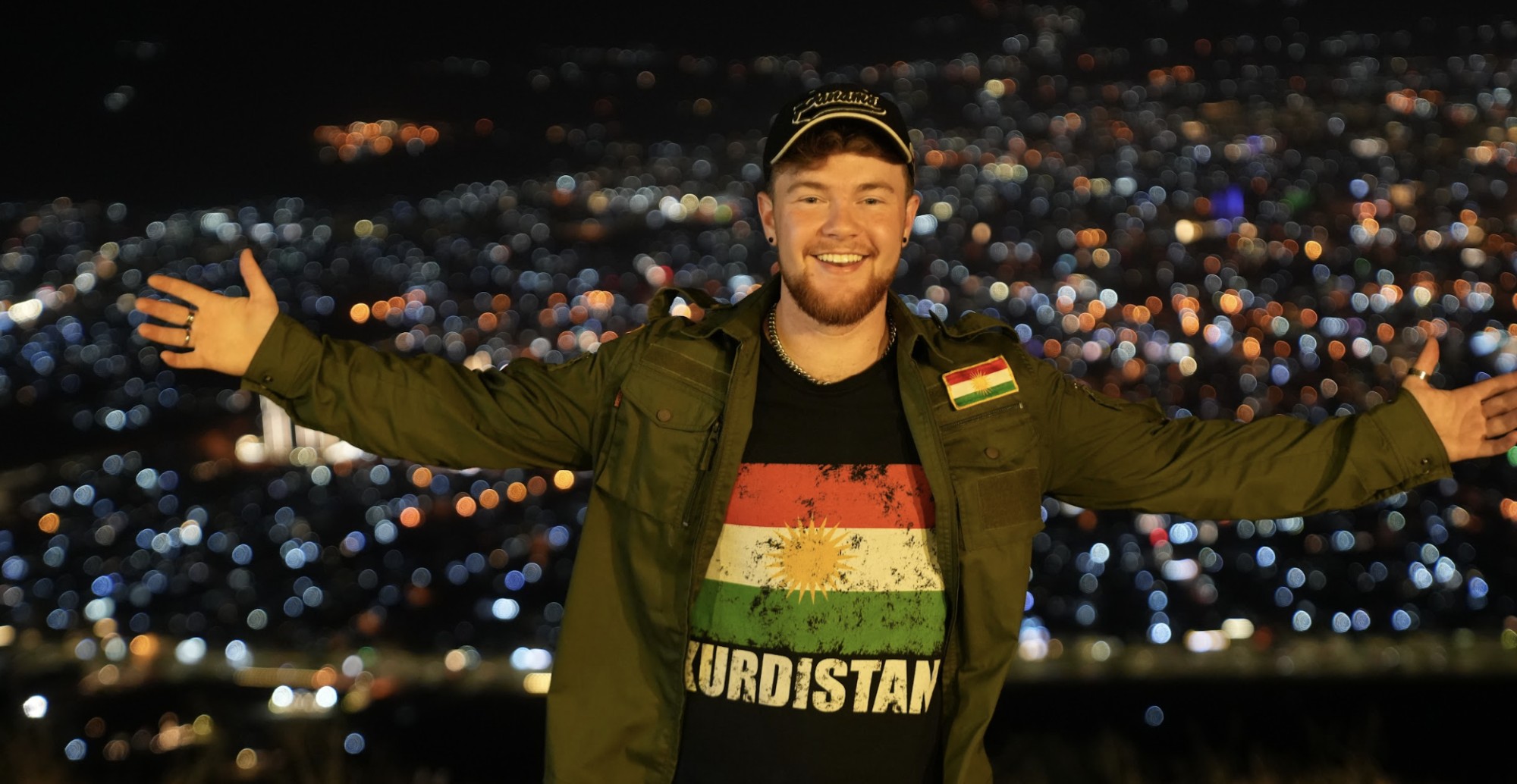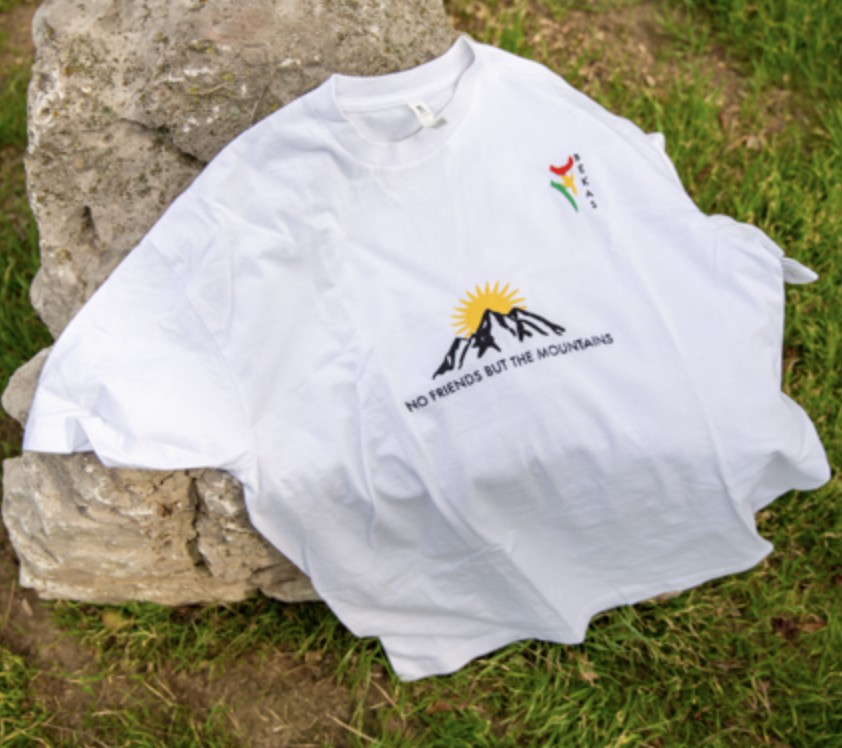Born in the city of Bukan in the Kurdish part of Iran, Gita Kurdpoor moved to Minsk, Belarus with her family at the age of two. Six years later, she finally arrived in Berlin, just before the fall of the Berlin Wall. Growing up in a liberal household, Gita was brought up to be an independent and, above all, self-confident woman.
The Kurdish artist always been greatly interested in the beauty or the uniqueness of things. An eye for the specific and the particular in the trivial has propelled her to delve deeper into art as she grew up. As a young woman, she first worked as a make-up artist and enjoyed various successes in the industry, including the launch of her own make-up show.
But she wanted more than just making people feel more beautiful or self-confident. At the beginning of her thirties, she decided to turn her back on the often-superficial work in the beauty industry.
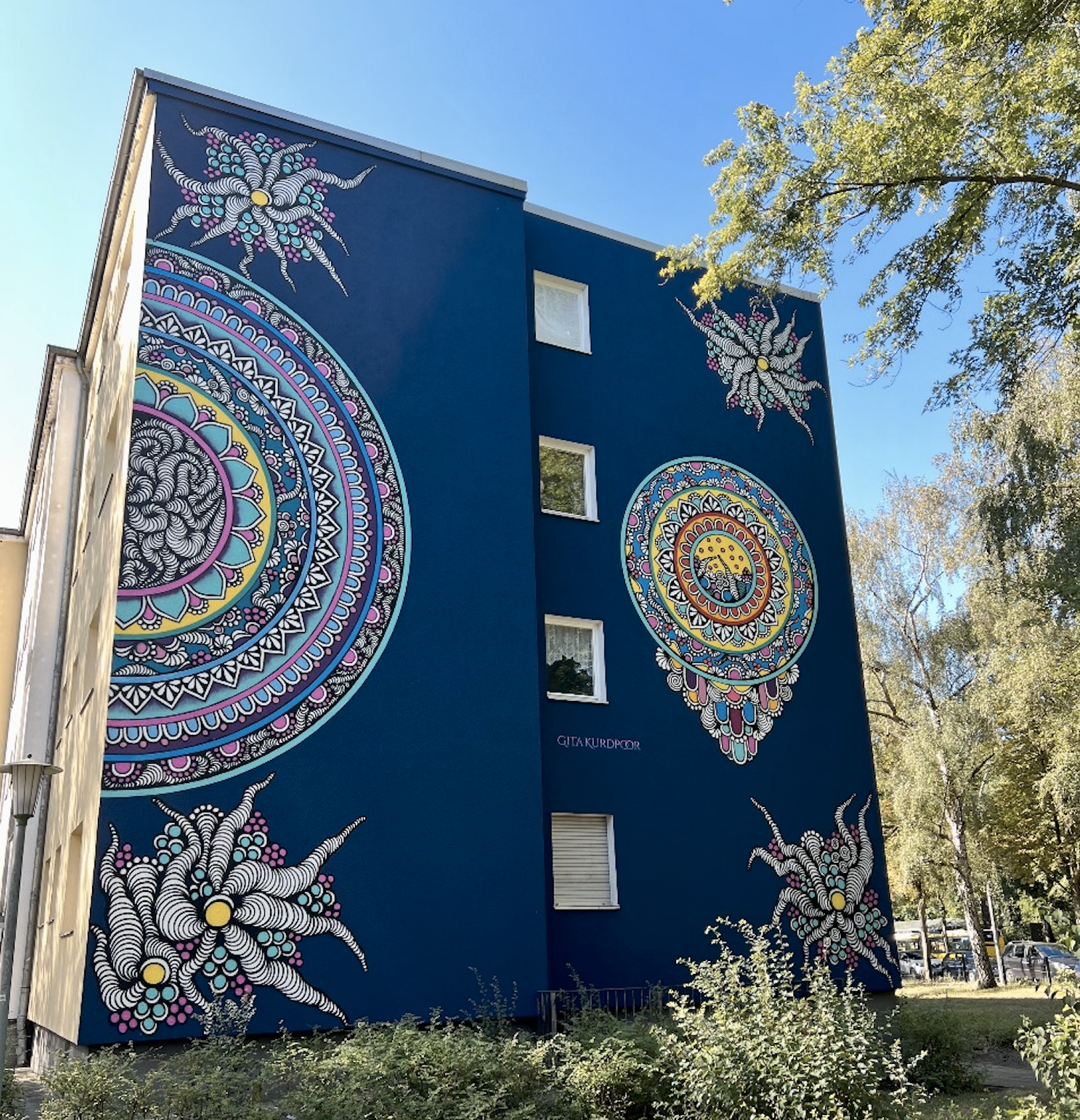
Life as an artist at subsistence level has motivated Gita to continue working on herself and to strengthen her art. Giving up is not an option for her.
Gita’s art is often understood as oriental or even religious, and she would like to distance herself from these perceptions. Gita does not accept any limitation in this regard: she chooses her colors and motives intuitively and does not follow specifications or guidelines. She uses the colors she feels. Life, not just her own, is unpredictable and multifaceted, which is an aspect she wants to reflect in her art.
Gita’s inspiration has always been her own emotions and experiences. Everyone sees something different in a picture. This is good and important because everyone brings a different emotion, a different point of view, and a different story. Art is in the eye of the beholder. And Gita is happy when her art moves.
Kurdistan Chronicle caught up with Gita Kurdpoor recently to discuss her artwork, her recent success in being featured in the Festival of Lights 2023 in Berlin, and her process.
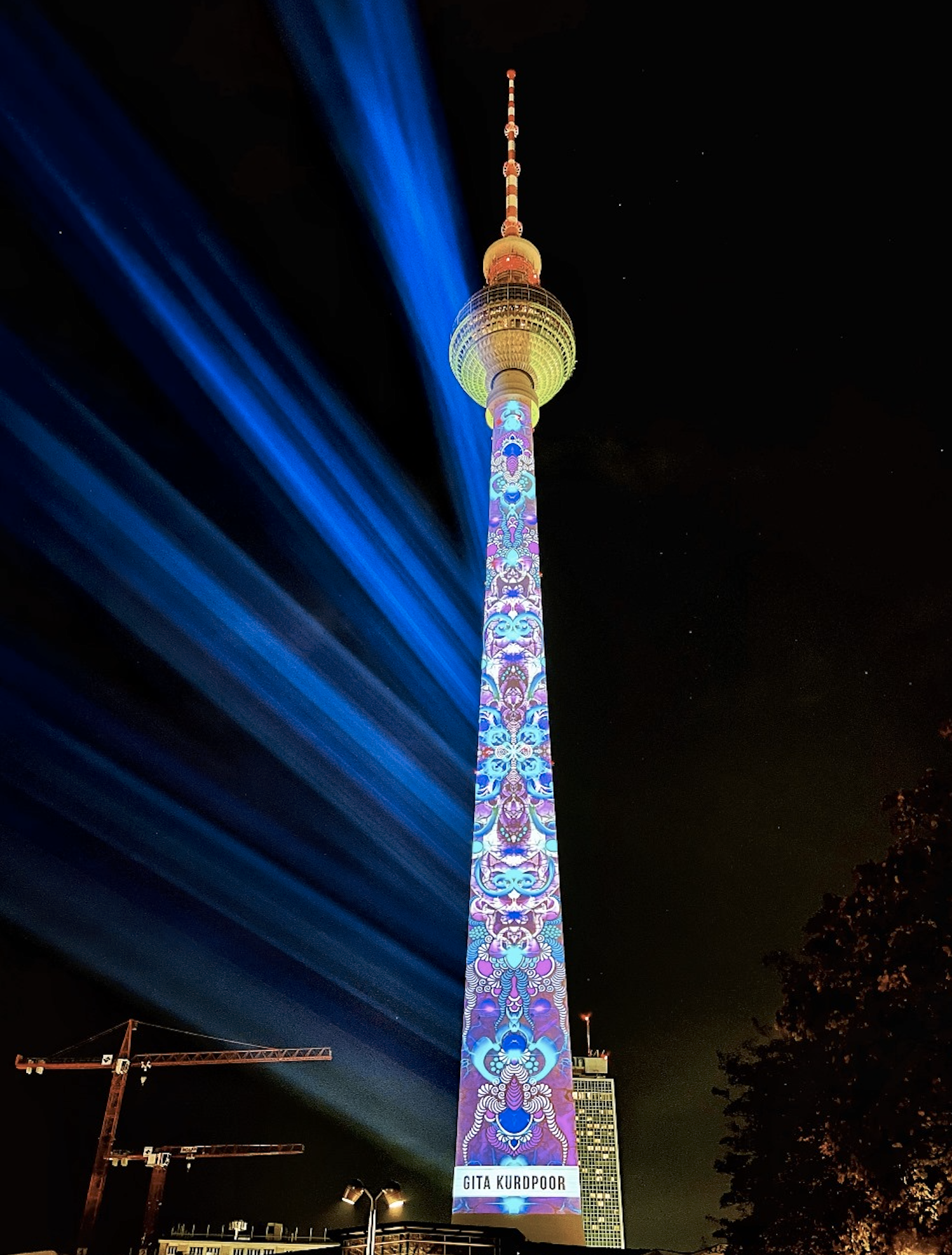
Kurdistan Chronicle (KC): You participated in the Festival of Lights 2023 in Berlin. Tell us about this experience. Have you had similar experiences in the past?
Gita Kurdpoor (GK): I participated for the first time in the Festival of Lights in Berlin in 2022 and was able to show my art on the Berlin TV Tower. That was great. I didn’t know for a long time whether I would be part of the festival again this year. When I learned that, after gracing the city’s landmark, my art would be featured on the beautiful and imposing Berlin Cathedral, I was of course even more pleased and considered it a great honor.
KC: How did you feel seeing your artwork projected on the Berlin Cathedral?
GK: My art is always very personal and, even though all my drawings are usually given a name, this time I was unsure about exhibiting pictures without a name. I wanted people to just let the images work on them. For my part, I was overwhelmed. It’s a huge difference to see your work on a piece of paper or on an iPad compared to on a building of that size. Of course, I was proud, but at first I just thought, “wow.” And I was and am grateful that they trusted me to do that. The beauty of art is always in the eye of the beholder, but if no one supports you in getting your art seen, then it doesn’t matter how it is. This project allowed me to reach a lot of people, who could see my art and that of other artists, which is great.

KC: You are known to be interested in drawing mandalas, and there are many walls decorated with your mandalas. What is the secret of your interest in this delicate art, which requires such great concentration?
GK: Yes indeed. But since I’m very detailed-oriented, mandalas are never a burden for me. A challenge for sure, but I am happy to accept it. I once had a client who praised my mandalas and suggested I do something like them as a mural. But such a round circle on such a large wall, I think that’s rather impossible. It’ll probably be more of an egg.
What can I say? If it doesn’t work, it doesn’t exist. On my next commission I painted several circles, mandalas, on several walls. There was no egg – they were all round.
I discovered the idea of placing my art on the walls of houses in 2020. I am very fortunate that the residents of the houses were always very friendly, open, and yes, grateful for my work.
KC: They usually say that Kurds are fond of colors. Is this true? Do your Kurdish roots influence your artistic style?
GK: Let me put it differently: I would not say that my fondness for colors is exclusively tied to my Kurdish roots. My parents’ loving upbringing, cosmopolitanism, and decision to leave their homeland for a life of freedom gave me the opportunity to become an artist. If my parents hadn’t left their homeland, I wouldn’t be where I am today. My art is free, and my style is free and emotional.
As a woman, I would not have been able to create this kind of art in Iran. My art on the walls of houses is a form of expression that I would not have been able to execute there. I would say my parents’ Kurdish spirit is in all my pictures. But for me the colorfulness itself or the interest in colors is not exclusively Kurdish.
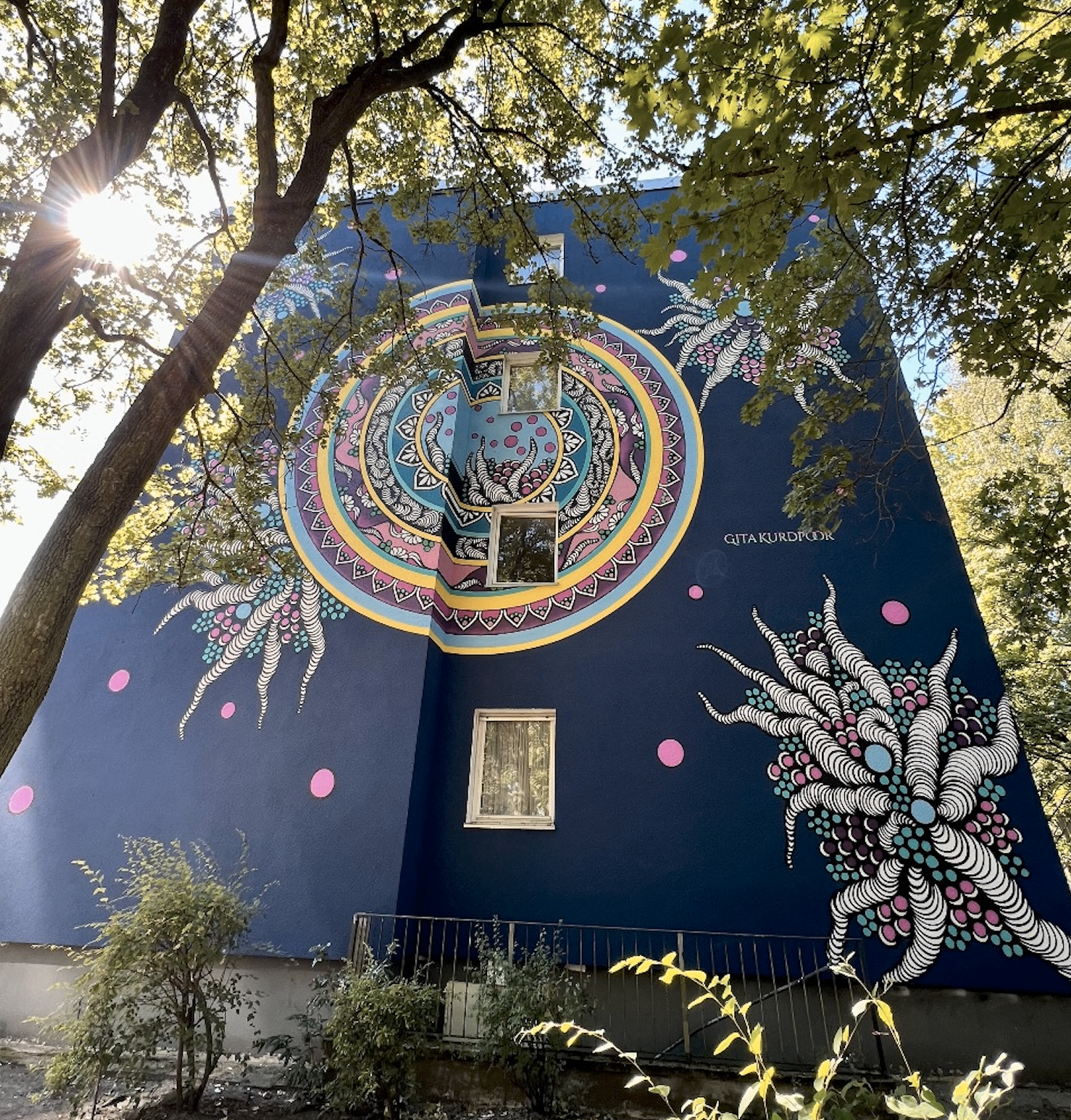
KC: You wrote on your personal website that “my inspiration has always been my own feelings and experiences.” Can you tell us about the process of transforming feelings into tangible art and acrylic images on canvas? What prompted you to choose your distinctive style?
GK: I really can’t verbalize how I express my emotions in my pictures in detail. People who are very close to me often recognize the phase that I am in by the pictures I draw. I often only realize what I have actually processed after I complete a work. This is intuitive. I let myself go completely and focus on the work. But it’s so much more. It also often requires discipline.
There's nothing romantic about working on a canvas for 12-14 hours a day for up to three consecutive weeks or driving to four walls of houses that are 20 meters high and 13 meters wide for four weeks in a row, where I spray and paint behind a tarpaulin every day from 7:00 am until it gets dark or it is over 30°C outside. It is indeed physically demanding and always a challenge. You have a set amount of time, so it doesn’t matter if you get sick during that time: you only have four weeks to finish. And that’s why you work. With angina, with fever, whatever. But I love it with every fiber of my being.
Just like everyone else, I sometimes have situations in my life that paralyze, preoccupy, or make me angry or sad, and I don’t always have the strength to sit down and create a picture. Overcoming these blockages and continuing to work is like anyone who doesn’t feel like going to the office or to work. And I also have to make sure that, as mentioned before, my work is seen.
That means I go out, meet people, introduce myself to potential partners, design brochures with my team, network at events, and show myself a lot so that they notice me and my art. I live from it. This is how I pay my rent. My life. It’s not always glamorous and colorful. It is often tough and sad. Many people forget that. That sounds more negative than I mean it. I’m very grateful. I love my work, but it is also a hard road. That’s why I’m happy about projects like the Festival of Lights, or when my art is shown at exhibitions.
When people recognize me in front of my projected image on the Berlin Cathedral and congratulate me and are happy about my art, then I know that I'm doing the right thing.
Mey Dost is currently pursuing a master’s degree in Digital Media Communication at RWTH University in Germany.
